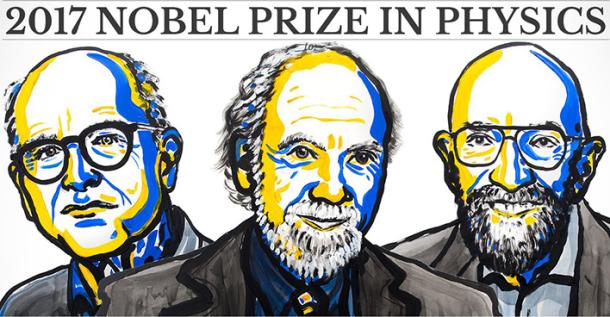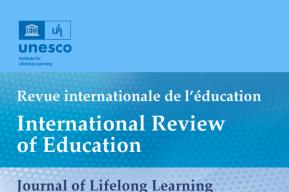News
2017 Nobel Prize in physics recognises the observation of gravitational waves

The Royal Swedish Academy of Sciences has awarded the Nobel Prize in Physics 2017 to Rainer Weiss, Barry C. Barish and Kip S. Thorne "for decisive contributions to the LIGO detector and the observation of gravitational waves". First predicted a century ago by Albert Einstein in his general theory of relativity, gravitational waves were not detected until September 2015. They carry information on the motions of objects in the universe, and their observation opens new avenues of exploration into the history and structure of our universe.
Gravitational waves are produced by massive accelerating objects in the universe such as neutron stars or black holes orbiting each other. Einstein predicted that their actions would produce waves of distorted space that travel through the universe at the speed of light. The first gravitational wave ever to be detected arrived almost simultaneously at the two Laser Interferometer Gravitational-Wave Observatories (LIGO), one situated in Livingston (Louisiana) and the other one 3 000 km away, near Washington state, on 14 September 2015. Pioneers Rainer Weiss and Kip S. Thorne, together with Barry C. Barish, the scientist and leader who brought the project to completion, ensured that four decades of effort led to gravitational waves finally being observed.
“We live in an era where some huge discoveries are really the result of giant collaborations, with major contributions coming from very large numbers of people,” explained Kip S. Thorne to Nobelprize.org. Over 1,000 researchers from 83 organizations and universities participated in the effort, including researchers of the South American Institute for Fundamental Research (ICTP-SAIFR), a UNESCO Category 2 Centre affiliated with the International Centre for Theoretical Physics (ICTP).
LIGO adapted the chirp of the gravitational wave to allow us to hear it:
Einstein himself did not believe that the gravitational waves could be measured – a century ago, the technology and precision required was unimaginable. By the early 1970s, both Kip Thorne and Rainer Weiss were firmly convinced that gravitational waves could be detected and bring about a revolution in our knowledge of the universe. The signal measured on 14 September 2015, following a collision between two black holes 1.3 billion years ago, was about one thousandth the size of a proton. The precision of the LIGO instrument is “a testament to modern technology and science,” said Barry C. Barish. “I think this couldn't have been done 50 years ago, or 20 years ago, or 30 years ago. It's taken the best modern lasers and control and engineering to be able to do it.”
 Comprised of two enormous laser interferometers located thousands of kilometers apart, LIGO exploits the physical properties of light and of space itself to detect and understand the origins of gravitational waves. Since 2015, three other gravitational waves have been detected, the latest one on 14 August at the VIRGO observatory (Italy) along with LIGO. Being able to experimentally detect these signals has been crucial to validate Einstein’s General Relativity theory, but it also provides new tools to investigate the history and the structure of our universe, potential modifications of gravity and much more.
Comprised of two enormous laser interferometers located thousands of kilometers apart, LIGO exploits the physical properties of light and of space itself to detect and understand the origins of gravitational waves. Since 2015, three other gravitational waves have been detected, the latest one on 14 August at the VIRGO observatory (Italy) along with LIGO. Being able to experimentally detect these signals has been crucial to validate Einstein’s General Relativity theory, but it also provides new tools to investigate the history and the structure of our universe, potential modifications of gravity and much more.
Sources:
- Nobel Prize press release and interviews
- The Abdus Salam International Centre for Theoretical Physics (ICTP)
Documentary about LIGO and the 1st observation of a gravitational wave by the New Scientist:







